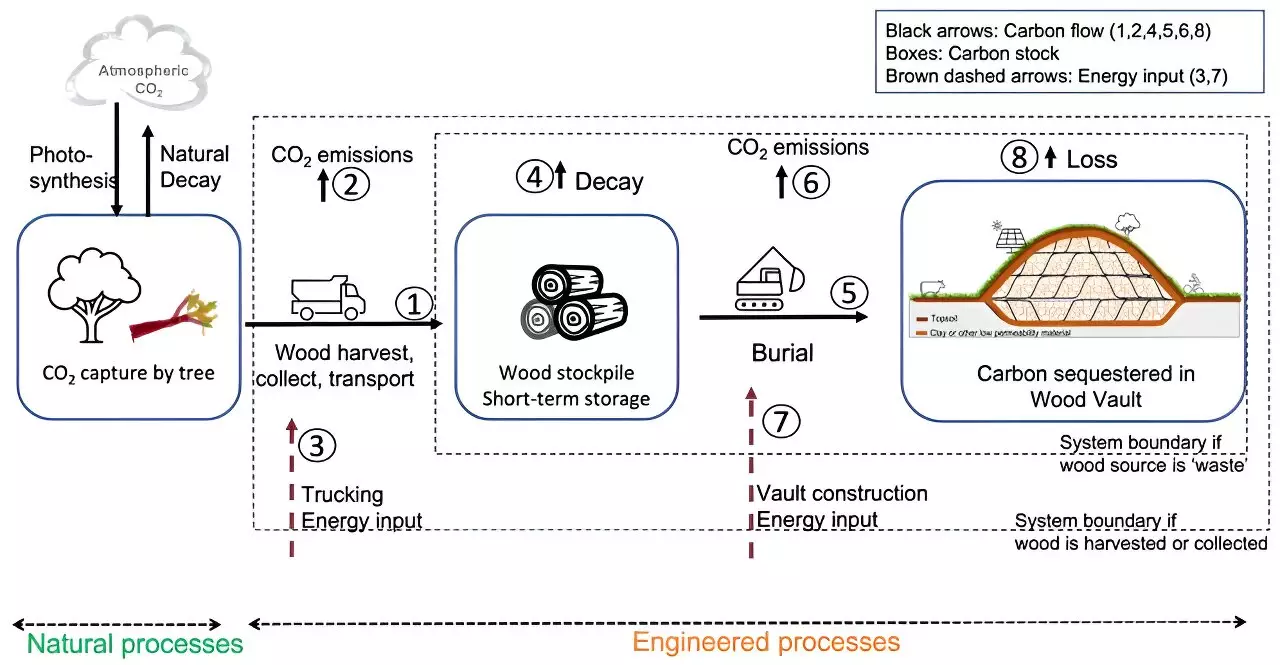Climate change poses one of the most formidable challenges of our era, driven primarily by rising levels of greenhouse gases, particularly carbon dioxide. As the effects of a warming planet become increasingly evident, scientists and researchers are urgently seeking effective methods to mitigate these emissions. Among various proposed solutions, a novel study conducted by a diverse team at the University of Maryland offers a promising approach—burying biomass as a cost-effective measure for carbon sequestration. This method could pave the way for broader climate action efforts.
Published in the journal Science, the study reveals significant findings based on the analysis of a log that has been naturally buried beneath clay for nearly 4,000 years. This ancient log serves as a crucial piece of evidence, providing insight into how carbon can be effectively sequestered over long periods. Yuan Yao’s perspective in the same journal highlights the urgent need for innovative strategies to both halt carbon emissions and remove existing carbon from the atmosphere. The combination of these needs underscores the importance of the research team’s findings.
The principle behind burying biomass for carbon storage is rooted in the natural life cycle of plants. As they grow, plants absorb carbon dioxide from the atmosphere. When they die, this carbon is typically released back into the air, contributing to greenhouse gas accumulation. The researchers propose that by altering this cycle—specifically, by burying biomass—carbon can be effectively removed from the atmosphere and retained in the soil. The well-preserved log discovered in Canada illustrates this potential, retaining 95% of the carbon it absorbed during its lifetime.
One of the standout features of this research is its emphasis on affordability. Traditional carbon sequestration techniques often demand significant financial resources, ranging from $100 to $300 per ton. However, the study suggests that burying biomass could be accomplished at a fraction of the cost—between $30 and $100 per ton. This substantial reduction in expense makes the method not only viable but also appealing for widespread implementation, particularly in regions with abundant clay soils suitable for this purpose.
An estimated annual potential to sequester up to 10 gigatons of carbon solely through biomass burial presents an incredible opportunity to address climate change effectively. However, realizing this potential will require concerted efforts from researchers, policymakers, and the agricultural sector. By prioritizing the burial of organic materials, particularly in areas that regularly dispose of agricultural waste, we can enhance natural carbon sinks while contributing to sustainable land use practices.
The implications of this research extend beyond mere carbon storage; they hint at a broader strategy for sustainable environmental management. While the challenges of climate change loom large, innovative solutions such as biomass burial could significantly contribute to mitigating its effects. By leveraging natural processes and minimizing costs, we can foster a more sustainable relationship with our planet, paving the way for a healthier future. The research underscores an essential theme: adapting our methods to the environment, rather than against it, might just hold the key to a sustainable future.


Leave a Reply